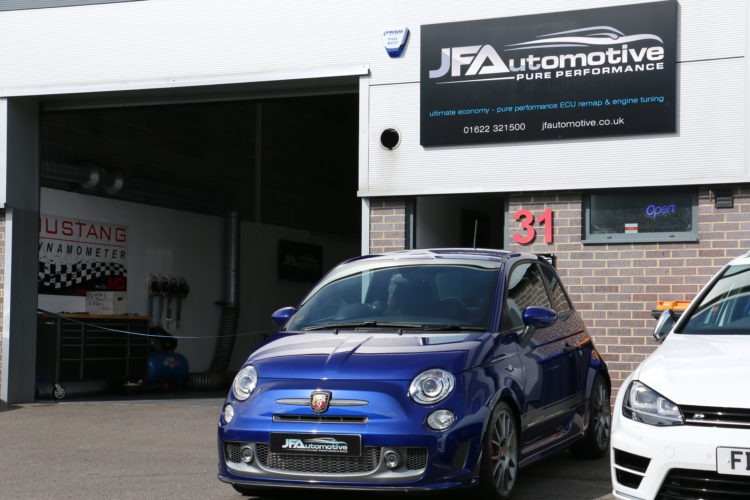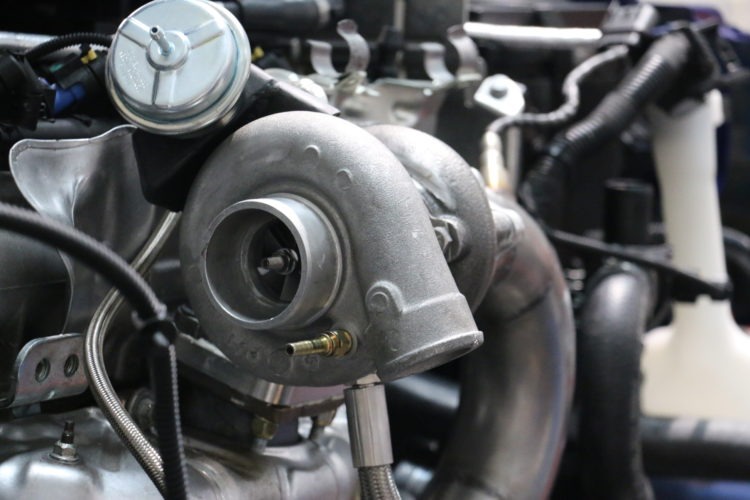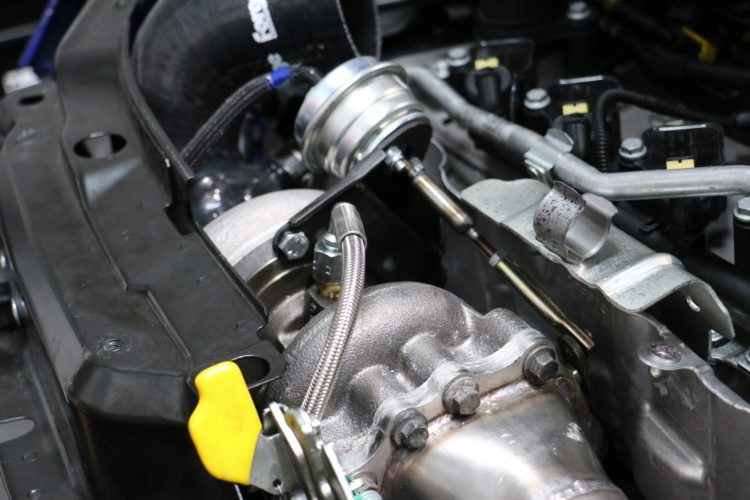
 https://jfautomotive.co.uk/wp-content/uploads/2019/10/Screen-Shot-2018-02-19-at-13.41.41.png
https://jfautomotive.co.uk/wp-content/uploads/2019/10/Screen-Shot-2018-02-19-at-13.41.41.png
Abarth Actuator Upgrades – Why You Probably Don’t Need One
It’s become a common myth that the Abarth engine requires an uprated actuator to make good power – this simply isn’t true.
The Forge adjustable actuator has become the must have mod for the Abarth enthusiast seeking more power. Recently we’ve seen a spike in enthusiasts bolting on these actuators & deliberately setting them up to bypass the engine managements boost control features and thus disabling most of the saftey precautions in the mapping. The problem with this, is it’s very very dangerous to the engine – excessive intake temps, turbocharger wear, and worse yet bottom end damage can occur. In this article we’re going to look at what the part actually does, and how the mod produces the extra power…then move on to how, and why this is a serious risk to the engine.
Prior to starting this article, and as a Forge dealer I really feel I must make a few points clear;
* Forge Actuators are a very good product when used correctly and set up correctly
* An actuator replacement will make more power safely if the original actuator is faulty
* This article addresses the misunderstanding surrounding modifying the Abarth, not slating a product. It doesn’t matter who makes the actuator – the results will be the same!
What does an actuator actually do?
Firstly, we need to understand what the actuator actually does.
Inside the turbocharger, there’s whats called a wastegate. When the engine management sees the turbocharger is making too much boost, the ECU opens this little flap & the exhaust gases bypass the turbocharger. This gives the ECU total control over turbocharger pressure.
On the Abarth, This flap operated by an actuator, which in turn varies electronically by a small valve. The ECU opens and closes this valve to send pressure to the actuator, to make it open the wastegate when it needs to bring the boost down.
On older cars, this electronic valve diddn’t exist. They used to rely on boost pressure to force the wastegate open, and how strong the spring was on the actuator was how you controlled at what pressure the actuator would move. It was a simple mechanical system that worked.
How does the ECU control boost?
Requested and actual. All ECU’s work on this very simple principle.
Map suggests 1.0BAR of boost, ECU closes the wastegate, Boost pressure rises & is monitored by the MAP & Boost sensors, when the sensors read 1.0BAR of boost, the ECU knows it’s actually making 1.0BAR of boost, so opens the wastegate to prevent it from delivering more boost, it then monitors the MAP and boost sensors, and as soon as it detects the boost is falling below the 1.0BAR the map requests, it operates the wastegate again to get an actual reading of 1.0BAR.
So what does the Forge actuator do?
It’s an uprated part. Fully serviceable, so should parts wear out it’s very easy to fix without total replacement. It’s harder to break, and when it does it’s easy to fix.
Other than that it offers absolutely no benefit as manufacturers spec their actuators to be capable of dealing with the maximum boost pressure the turbocharger is capable of handling. If your tuner is running your turbocharger at a higher boost pressure than the turbocharger is rated at then I’d look elsewhere for mapping as it’ll only generate a ton of heat, resulting in less power & more stress on the turbo…whilst making less power.
So how are people getting more power with one fitted?
Well, that’s an easy one – it is fit incorrectly.
Forge supply springs for different applications. You can easily jam a spring in there that refuses to move the wastegate till it’s making 1.4BAR of boost. With that installed, your ECU asks the engine for 0.5 bar of boost, and the turbo does whatever it wants as it physically can’t open till 1.4BAR. The ECU then goes full panic and shuts down into limp mode to prevent itself from catastrophic failure. Either that or it pulls back all the ignition timing to try and get control of the engine.
However, if you get the right spring in the thing, then fiddle the wastegate so it can’t shut properly. Balance it just on the edge of where the ECU is throwing the car into limp mode. You’re forcing the car to make more boost than it wants to. The ECU then compensates by piling in a ton of extra fuel in an attempt to keep the engine cool. It then gets too hot and pulls timing back.
You can make it work by fiddling with the wastegate control maps, and re-setting them all up to be able to control boost semi accurately – however I’ve seen this explained on forums as ‘Fit this actuator, you then need to get it mapped in or the car won’t run propperly’ which is a horrific lie. We then see guys fitting a part they don’t need to their engine, this causes an actual mechanical fault, then people claim the part made lots of power on the dyno?
So in summary?
Fit it right, and you gain no power. You gain a more reliable turbocharger actuator, but have you ever actually heard of an actuator failing?
Fit it a little bit wrong, you gain a tiny bit of power. Your ECU looses control over boost, excess stress on the turbocharger and the entire engine, car runs hot.
Fit it very wrong, your car becomes undriveable. Your ECU has no control over the turbocharger, and forces itself into limp mode due to uncontrollable overboost. Intake temps, exhaust temps and more become dangerously hot & you risk bending rods if you can get it to run.
Actuator upgrades have their place, but attached to a fully working stock Abarth turbocharger is not one of them. The stock turbo doesn’t make enough boost even on a very hot Stage 2+ map to get anywhere near requiring one. Our advice? Bolt an induction kit to it and gain a genuine 9BHP whilst lowering intake temps and making your engine safer.
For further proof, check out the 250BHP Stage 3 Abarth 595 we built at the bottom of the page. Notice the turbo still has a totally stock actuator even at that power level!
Get My Price

Search Tuning...
Search our ECU tuning options to increase the power and torque of your vehicle and our wide range of performance parts.



